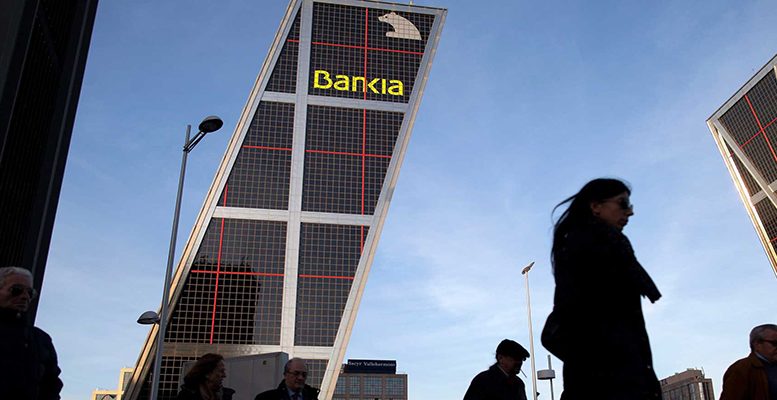On Tuesday, Bankia presented its 2018-2020 strategic plan. After the presentation, the bank’s share price fell 0.32%. Over the three years of the plan’s duration, the country’s fourth biggest lender, 61 pct state-owned, is forecasting a significant increase in profits, the distribution of nearly half of these profits to shareholders and improvments in various profitability and efficiency measures.
Bankia advanced its intention of distributing over 2.5 billion euros amongst shareholders, which it said is more than double that paid out in the last four years.
The amount distributed in cash dividends will rise to between 45 and 50% of earnings. Whatsmore, the lender plans to give back the capital which exceeds the 12% of its CET1 “fully loaded” ratio (the more demanding measure related to banks’ solvency buffers).
Bankia announced an after tax profit target of 1.3 billion euros in 2020, more than doubling the 505 million euros in 2017, and an interest margin (the difference between what the bank charges for loans and pays out on deposits) for 2020 of 2.9 billion euros, 26% higher than last year (including the recent acquisition of BMN).
At the end of the strategic plan period, the group expects its NPLs ratio to be below 4% compared with 8.9% in 2017. It is forecasting double-digit ROE up to 10.8% at end-2020, while targeting improvements in its efficiency ratio to below 47%.
The bank also took advantage of the strategy presentation to increase its forecast for the synergies to be obtained in 2020 from the merger with BMN by 22% to 190 million euros.
Whatsmore, Bankia also hopes to change the trend in its interest margin, increasing it by 29%.
Commissions will rise at an average annual rate of 7%. To achieve this, Bankia is forecasting a 5% rise in private clients (400.000 more) and 20% in companies (12.500 more).
It aims to cut costs by 2.5%.
The improvement in the quality of its balance sheet will also boost profitability.
Unproductive assets will decline by 8.8 billion euros, reducing the outstanding balance to 8.4 billion. As a result, the ratio of problematic assets on the balance sheet will drop from the current 12.5% to 6% in 2020.





